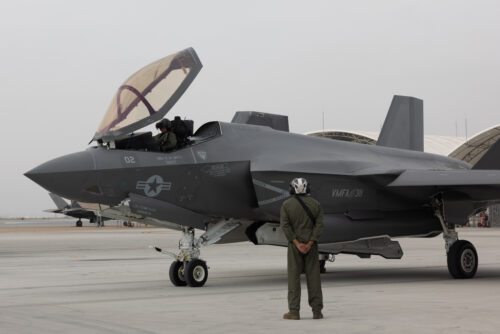U.S. Marine Fighter Attack Squadron 311 (VMFA-311) is on the cusp of declaring Initial Operational Capability (IOC) for the F-35C Lightning II, marking a significant milestone for the squadron and the U.S. Marine Corps.

Based at Marine Corps Air Station Miramar, VMFA-311 is one of only two squadrons in the Marine Corps operating the F-35C variant, designed specifically for carrier operations. The squadron has successfully met the rigorous training, personnel, equipment, and aircraft number requirements to achieve IOC. The unit, boasting a rich history dating back to the 1940s and including notable figures like Ted Williams and John Glenn, is now at the forefront of naval aviation.
“You know, we started with one aircraft and about 84 Marines, ” Lt. Col. Michael P. Fisher, the commanding officer of VMFA-311, told NBC 7. “Not a lot of infrastructure and now we’re declaring IOC about a year and a half later.”
The F-35C is a significant upgrade from the F/A-18 Hornet, offering advanced capabilities in stealth, sensor fusion, and network-centric warfare. The squadron’s transition to the new platform has been a complex process, requiring extensive training and infrastructure development.
“The F-35C is an amazing weapon platform,” Capt. Joshua “Shakespeare” Falgoust, an F-35C pilot in VMFA-311, told NBC 7. “You have a lot of say in the air, and you’re able to attack lots of different targets in multiple different ways.”
While the squadron has surpassed initial benchmarks, achieving FOC requires a specific number of aircraft and personnel. Currently, VMFA-311 operates six F-35C jets, with two more needed to declare full operational capability (FOC).
“Us getting ready for IOC is just the way that we get ready to go out and deploy,” Falgoust said, expressing confidence in the squadron’s ability to reach FOC in the near future.
VMFA-311 benefits from the experience of its sister squadron, VMFA-314, which has already achieved FOC and deployed with the F-35C. Close collaboration between the two units has accelerated the learning process for VMFA-311.
For more information, hit the Source below